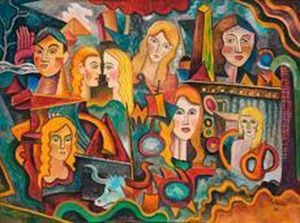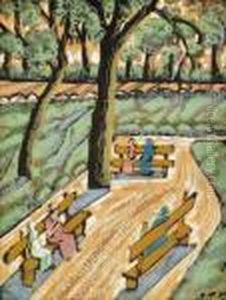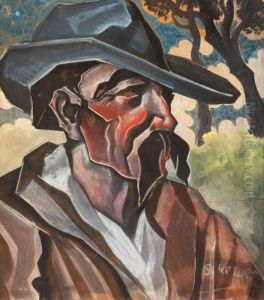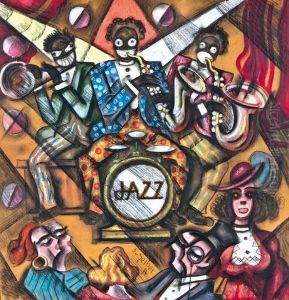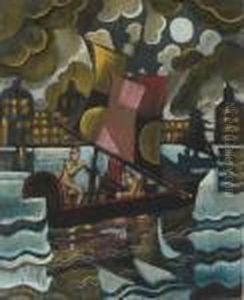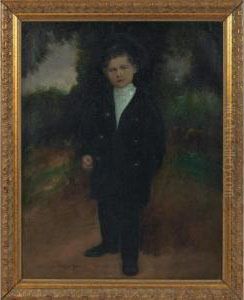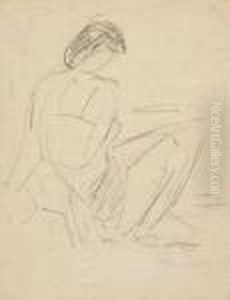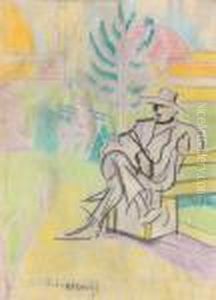Hugo Scheiber Paintings
Hugo Scheiber was a Hungarian painter and graphic artist known for his involvement in the Expressionist and Dada movements. Born on September 15, 1873, in Budapest, his early life was marked by hardship and poverty. Despite these challenges, Scheiber developed a strong interest in art, a passion he pursued without formal training.
Scheiber began his artistic career working as a typesetter and printer, which exposed him to graphic design and typography. His early works were influenced by the Secessionist movement, characterized by bold colors and stylized forms. However, it was his exposure to the works of Edvard Munch and the German Expressionists that had a profound impact on his artistic direction. Scheiber's style evolved to embrace the expressive use of color and distortion of form to convey emotion, a hallmark of Expressionist art.
During World War I, Scheiber's art took on a more somber tone, reflecting the turmoil and suffering of the era. It was also during this time that he formed a friendship with fellow artist Béla Kádár, with whom he would later exhibit. In 1916, Scheiber moved to Berlin, where he became closely associated with the Dada movement and participated in avant-garde circles that included the likes of Raoul Hausmann and Hannah Höch.
Scheiber's work during the 1920s was characterized by a dynamic fusion of Expressionism and Dada, often incorporating elements of Cubism and Futurism. His paintings and graphic works often depicted urban life, the chaos of the modern city, and the alienation of the individual. He had several exhibitions in Europe, and his work was included in the seminal 'First German Autumn Salon' organized by Herwarth Walden in 1913.
The rise of the Nazi regime in the 1930s and its oppressive policies toward avant-garde and modernist art forced Scheiber to return to Hungary. This period was difficult for him, as his art was not well received by the conservative Hungarian art establishment. Despite this, he continued to work and exhibit, although his output diminished, and his later works have not been as well-studied or celebrated as his earlier, more radical pieces.
Hugo Scheiber died on April 13, 1950, in Budapest. He left behind a body of work that, while not as widely recognized as some of his contemporaries, contributed significantly to the development of Expressionist and Dada art. Posthumously, his work has been rediscovered and reassessed, with exhibitions and scholarly attention bringing renewed recognition to his artistic achievements.





